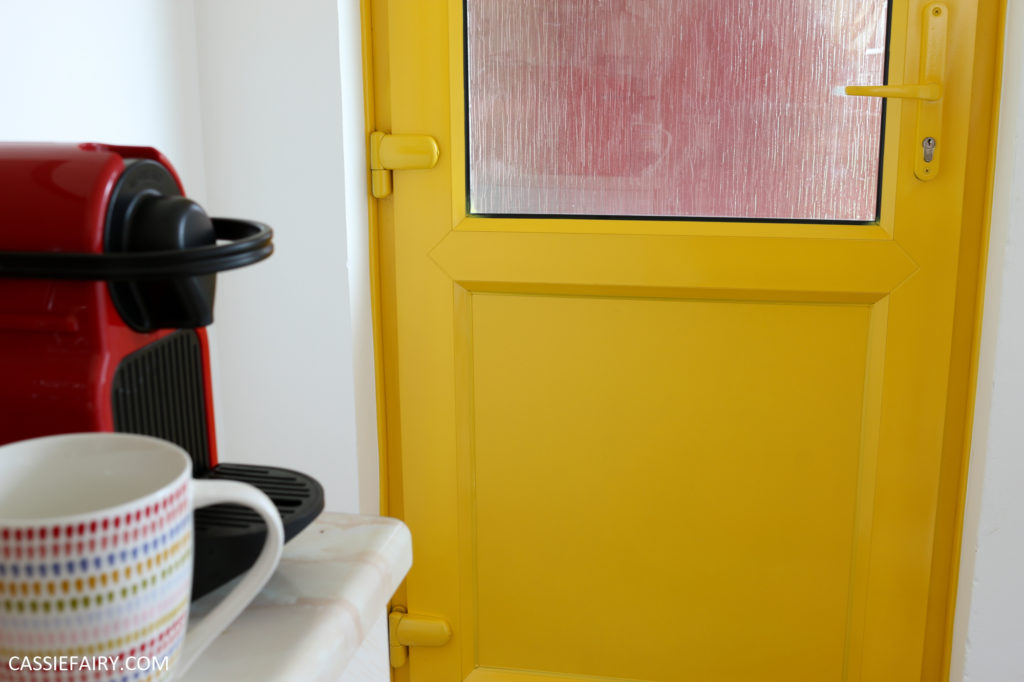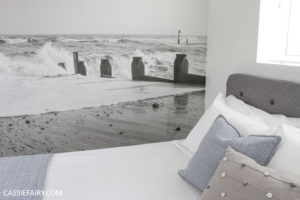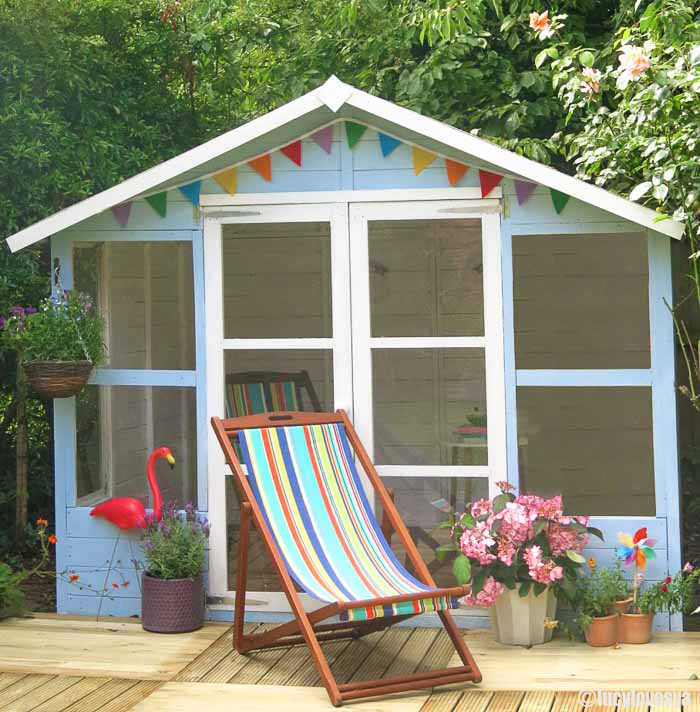
Of course, you could freshen up the PVC with a coat of bright white, it doesn’t have to be a complete change of style. BUT I figure that if you’re going to paint the door anyway why not choose a fun and funky colour to turn your door or window into a real talking point? I chose Canary Yellow All-Surface paint by Rust-Oleum for this project to add a touch of sunshine to the internal face of the kitchen door.

It might seem like a tricky task to paint PVC windows and doors, but you just need to take a little time to prepare the area for spraying. Be sure to protect the surrounding walls and floor from over-spray too. A couple of coats of paint is all it takes to renew your old PVC doors – I reckon 2 cans of paint would be enough to complete the job.

Here’s what my back door looked like before painting
By the way, I’m only painting my PVC doors because they would need to be replaced anyway if I didn’t try to update them myself, so it’s a win-win for me. But if you’ve got brand new doors in great condition, maybe stick with the original finish until they’re disgustingly stained and beyond help, like mine! Also, here’s how to paint a door (according to the Rust-Oluem website), which is a great tutorial if you have a wooden door and want to use brush-on paint rather than spray paint.


Watch my step-by-step video on YouTube here:
STEP 1
Thoroughly clean the surface using warm soapy water. Rinse and wipe clean. Allow to dry.

STEP 2
Mask off the windows using a piece of paper or plastic sheeting and masking tape. Mask around the outside of the door frame, and cover the surrounding walls and floor too. Remember to cover the key hole too!


STEP 3
Use Rust-Oleum All Surface spray paint and follow the instructions on the can to give the door and frame a fine coat of paint. Allow to dry thoroughly and keep the room well ventilated at all times. It’s a good idea to wear a spray painting mask for safety.


STEP 4
Build up the colour with a second coat of spray paint. It is better to use two or three fine layers of paint than it is to spray one thick coat, as the paint may drip if it’s applied too thickly. Allow to dry between each fine coat of paint and keep the room well ventilated. Don’t breathe in the spray paint at all!


STEP 5
Continue to paint until the door is completely covered, without any patches. Allow the paint to dry thoroughly before removing the masking tape and paper/plastic sheeting.


Do take extreme care to cover up all the surrounding walls, flooring, furniture etc – don’t leave anything to chance because spray paint can go anywhere! And be sure to use a spray painting mask and keep the room well ventilated if you’re working indoors. Basically, don’t take any risks and be safe!

Here’s how the internal face of my back door looks now – a bright pop of summery colour in my 50s-style kitchen. This project was one of the earliest makeovers I did in the house so I’ve actually lived with the yellow door for a couple of years now…

So I can tell you that the spray paint has survived well and the only place where it’s worn away is on the handle from all the constant use. But that hasn’t been a problem for us, as we have extra cans of the yellow spray paint and can just give it a quick respray as needed.

Please bear in mind that I’ve only spray painted the interior-side of the door, so I don’t know how the spray paint holds up on the exterior of a door, but I’d be interested to know so please message me if you’ve tried it yourself. Also, let me know if you have a go at spray painting your PVC window frames or doors in the comments below and I’d love to see your DIY photos so please tag me in your pics on Instagram @Cassiefairy.

PIN THIS PROJECT FOR LATER…






















One Response
Nice Work Amazing Post…